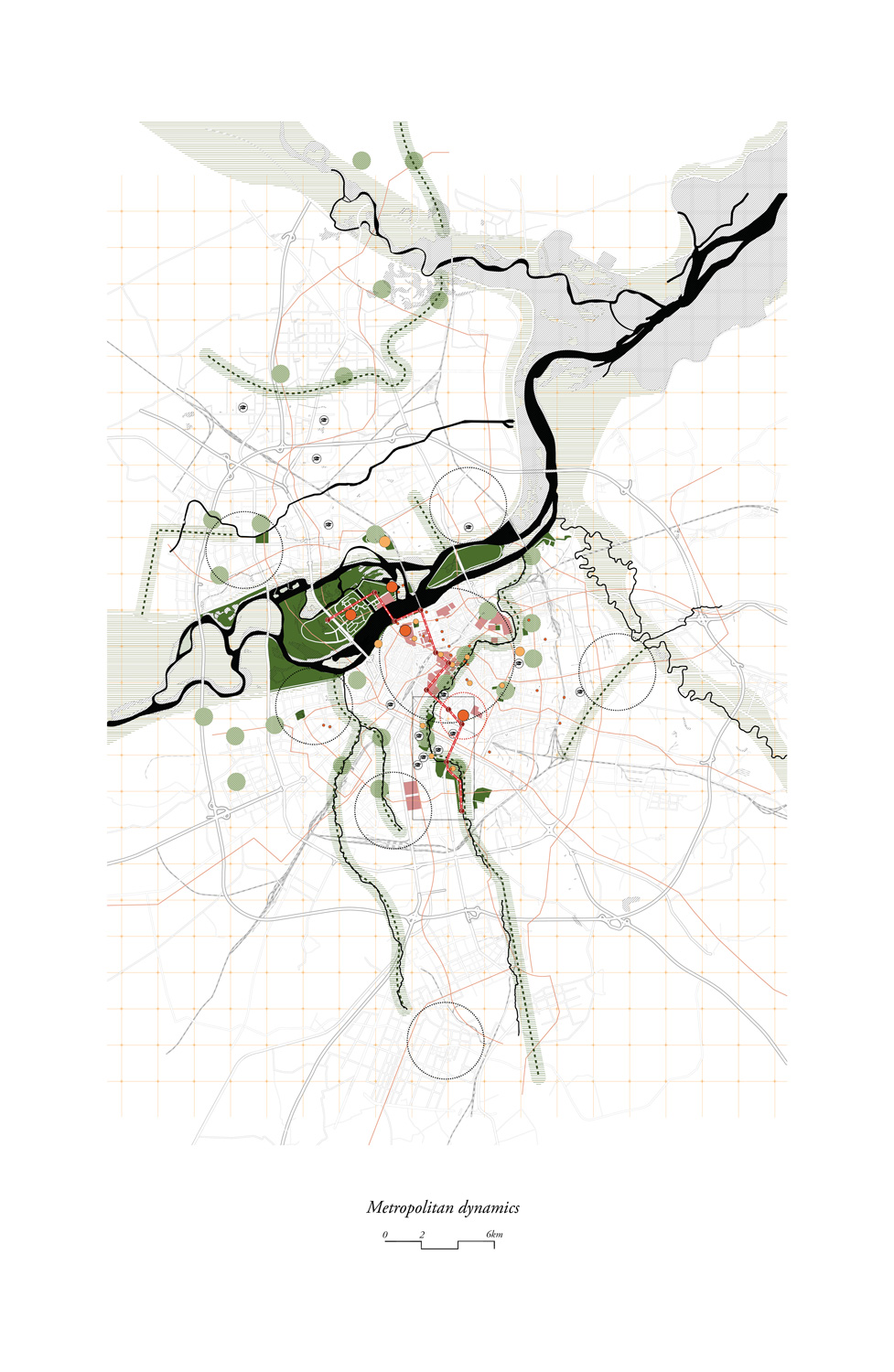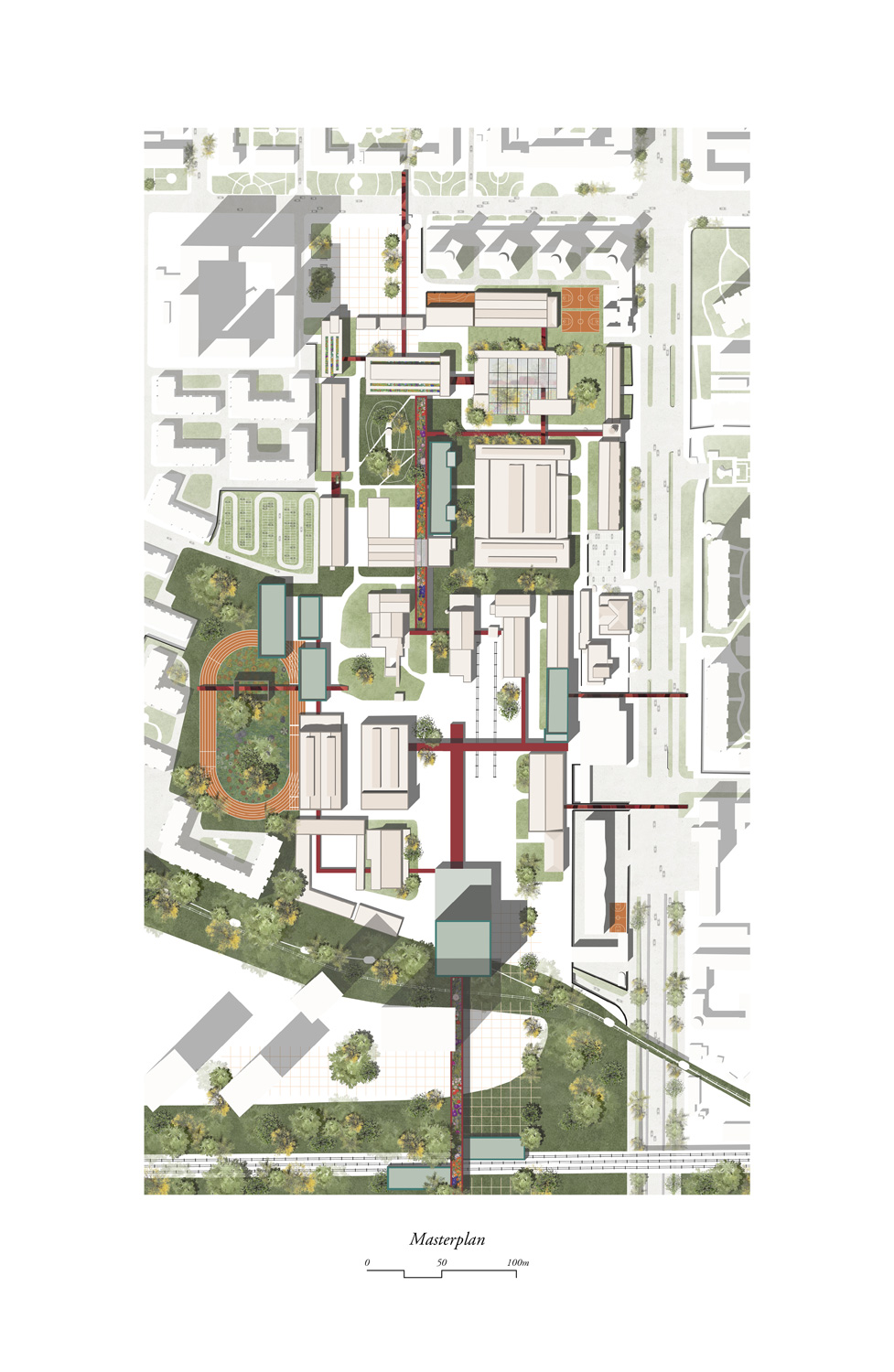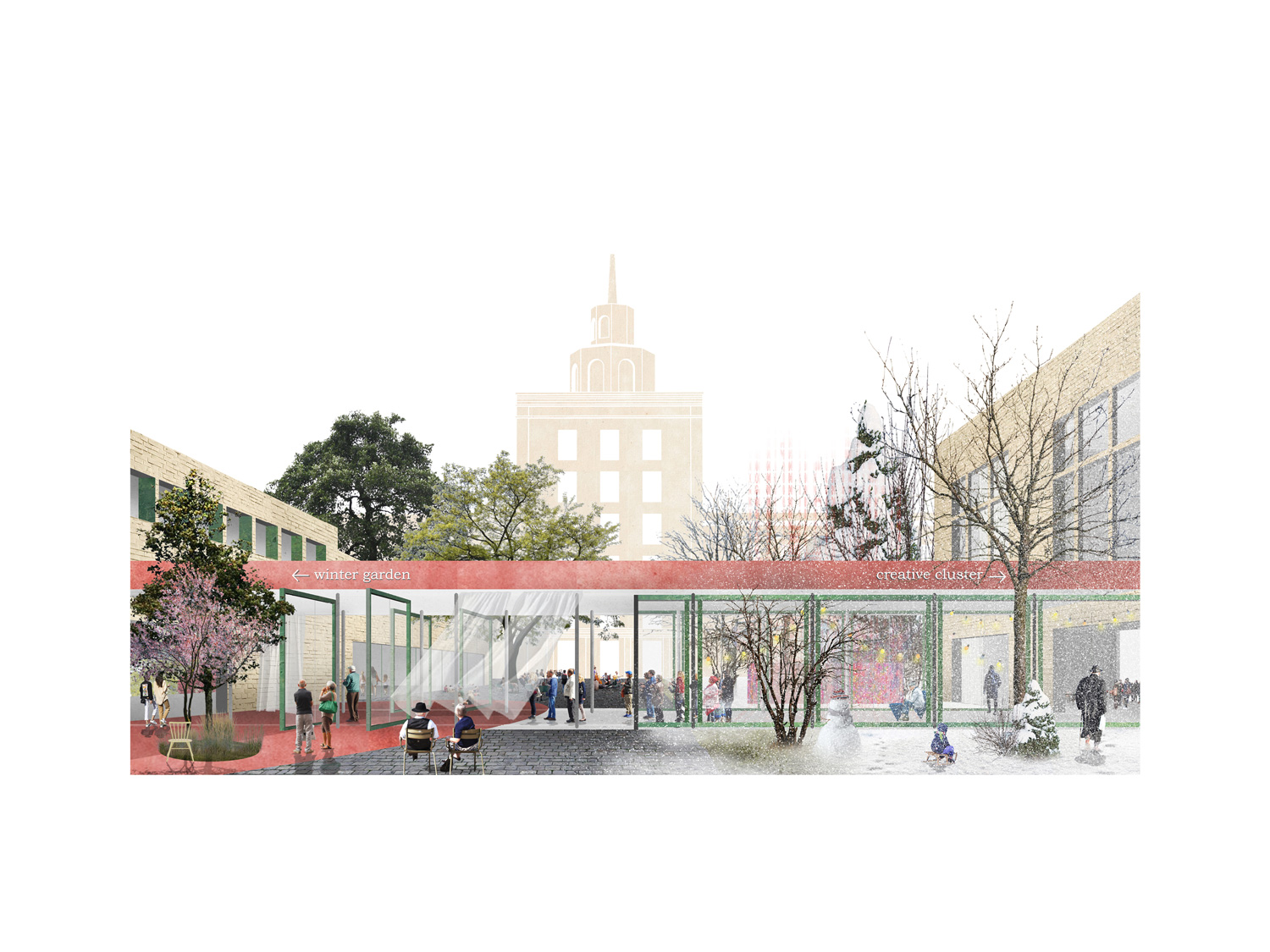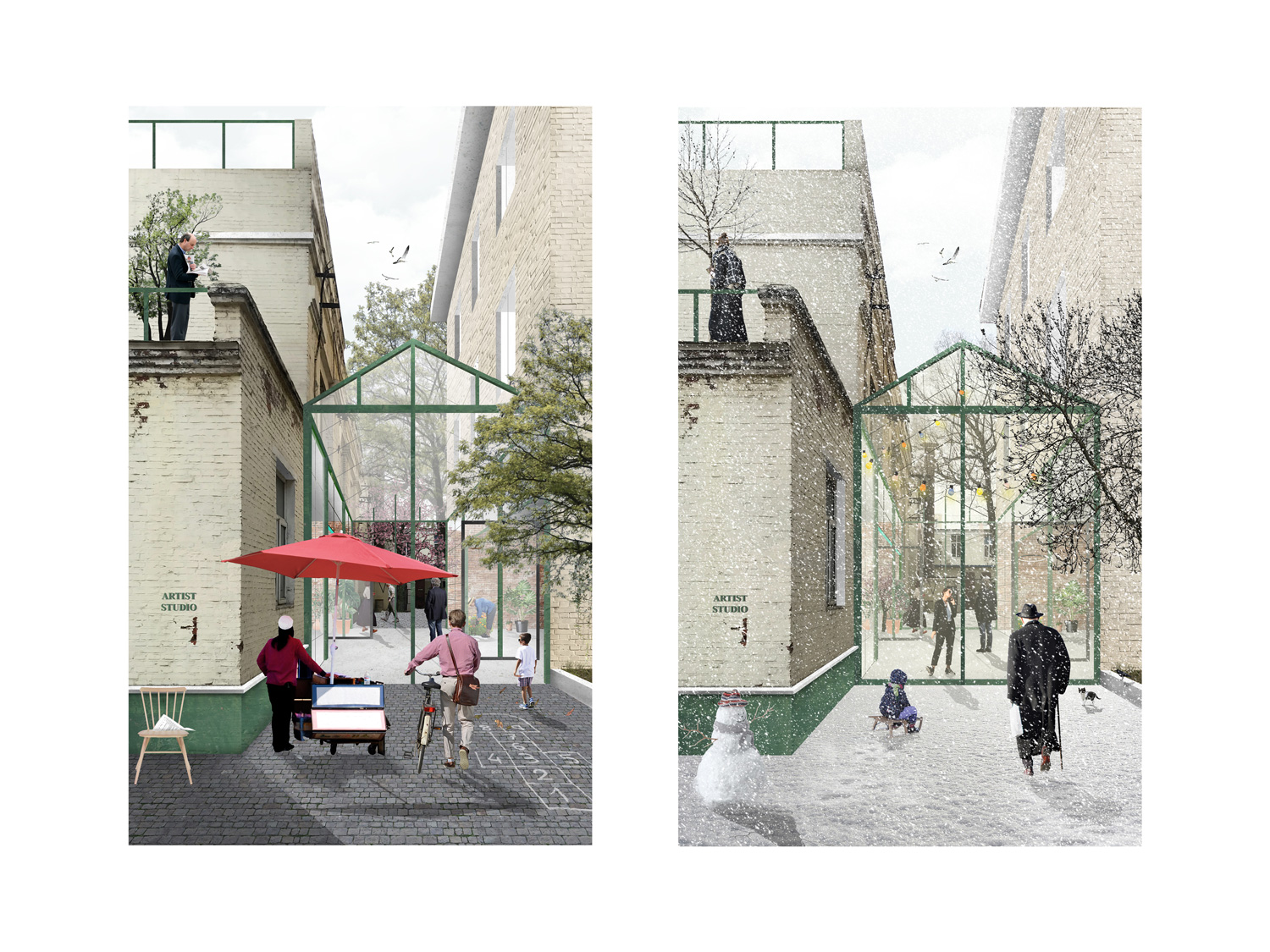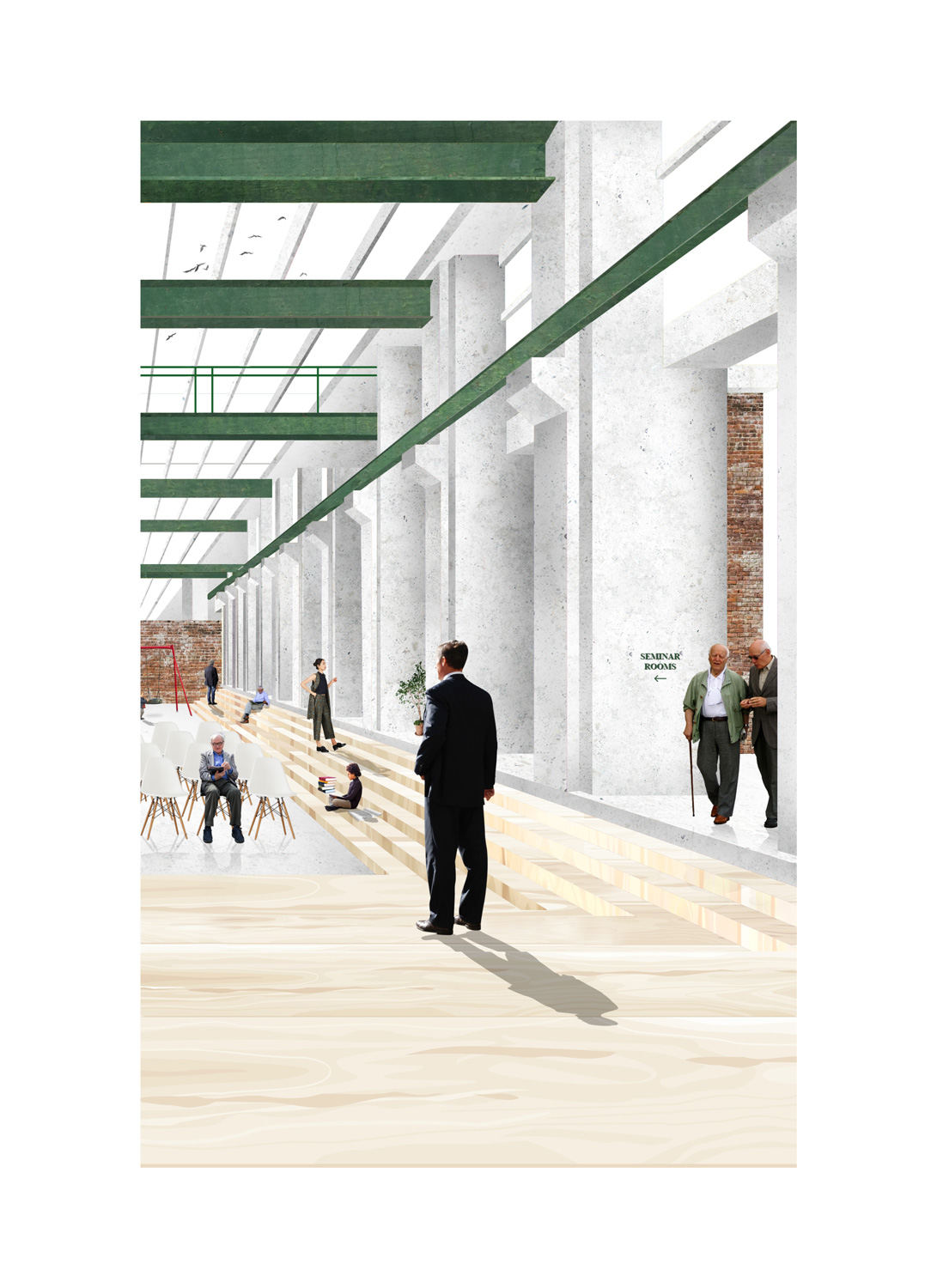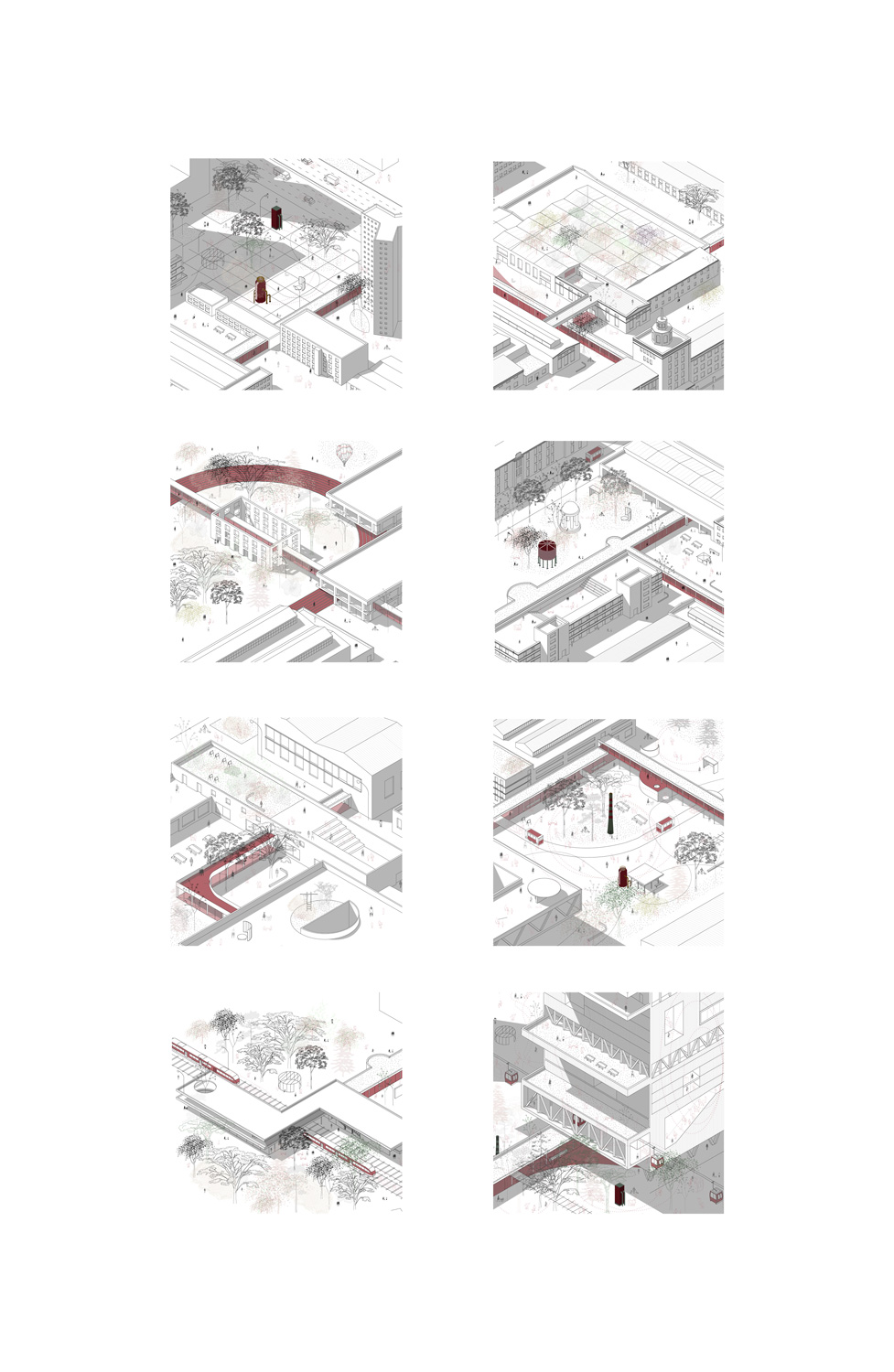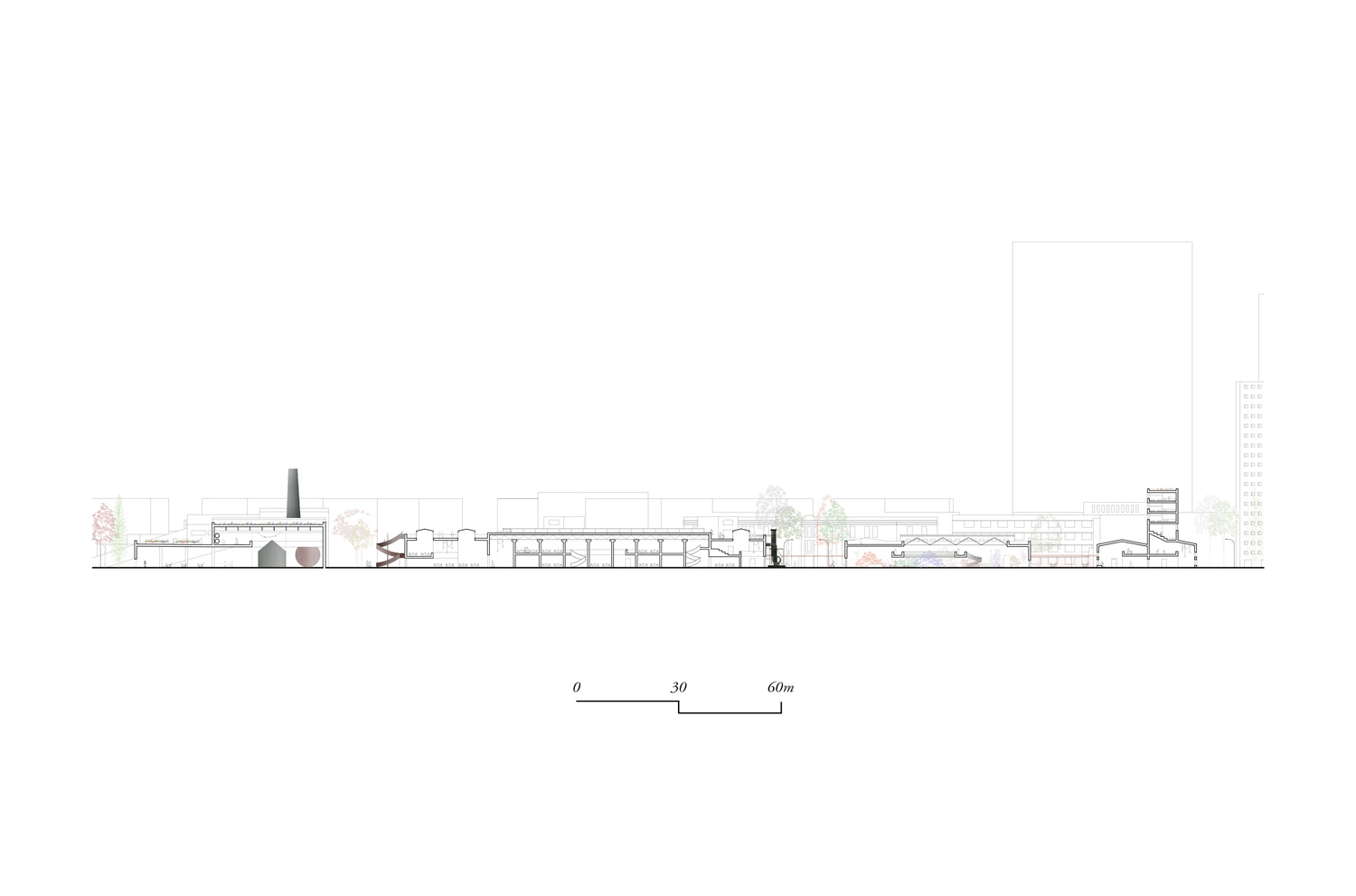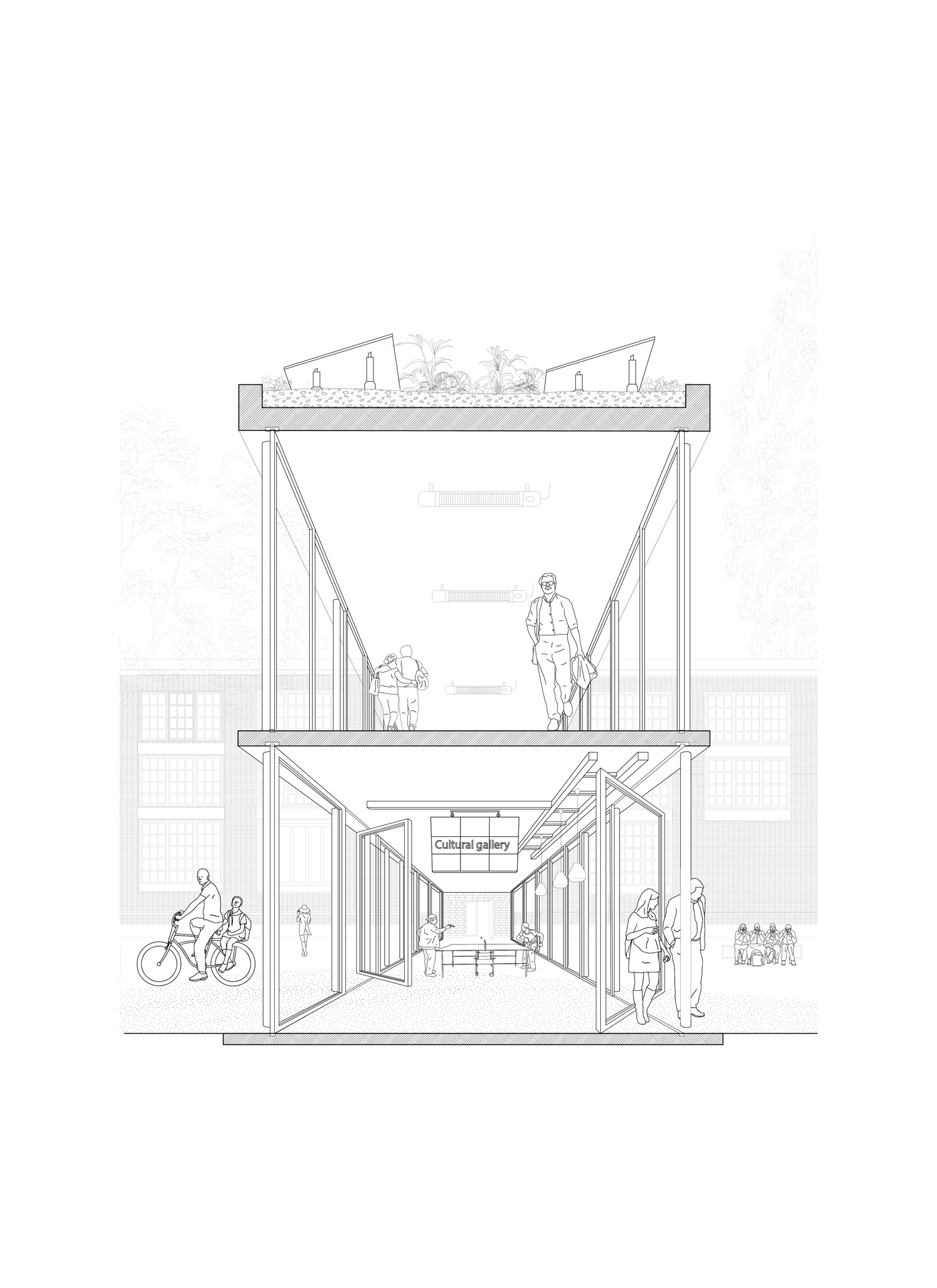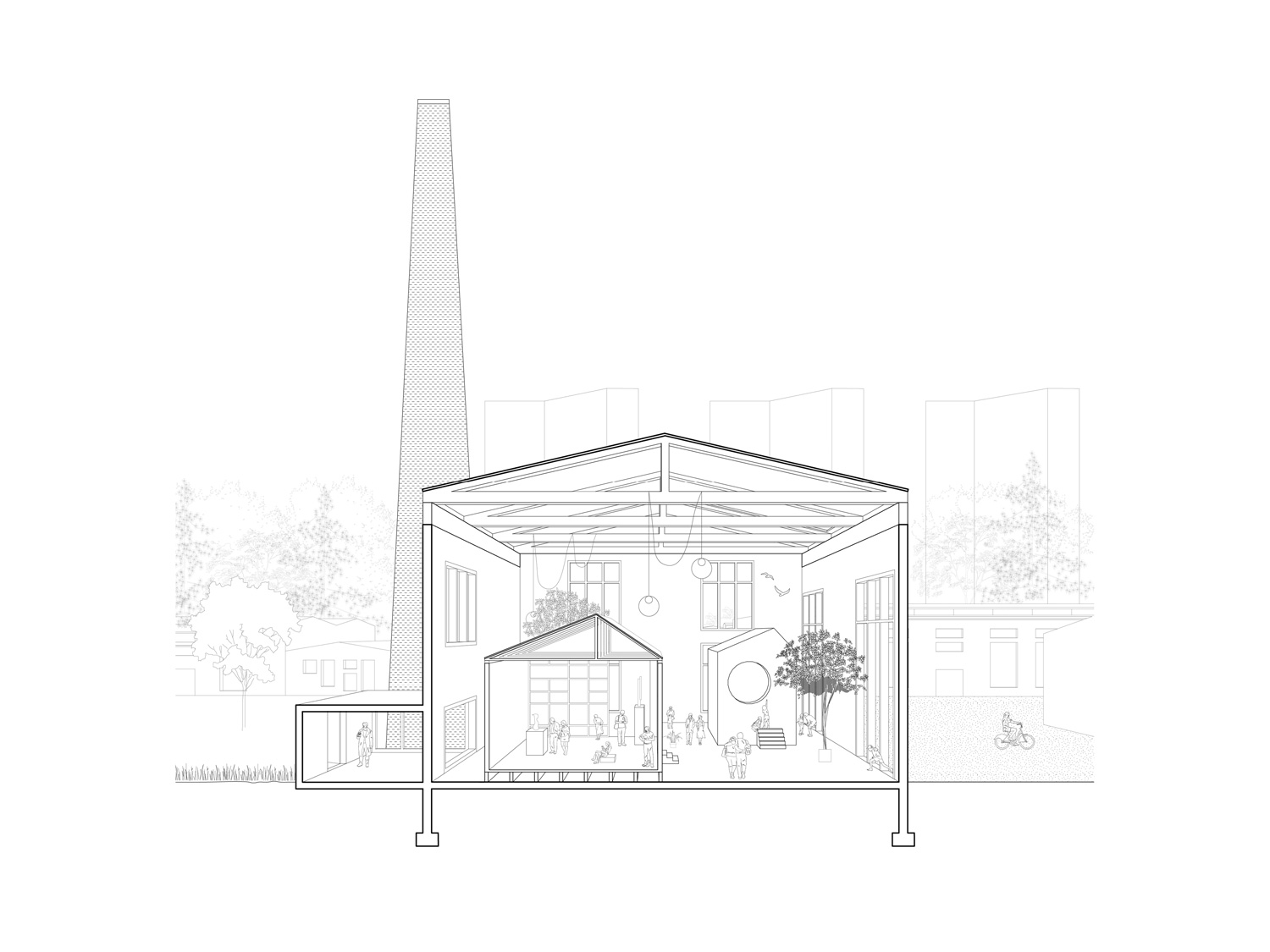☉ Harbin Gallery District is a winning proposal by Claire Neff & Pierre-Alexis Réty for International Greendot Competition in 2019. It is located in Harbin China in an urban setting. Its scale is extralarge with a surface of 214.000 sqm.
Harbin Gallery District is anchored in the dynamics of the future of the Harbin’s city in the north- east of China. One of the main features of this proposal is the preservation of 80% of the original site. Indeed, the project does not seek to remove or add elements that would risk destroying the industrial character of the site. The approach seeks to build on the existing to develop, amplify and give it astandingin the urban matrix of Harbin: towards a new metropolitan momentum.
The singularity of the site results mainly in its industrial fabric, which invites on visitors to take advantage of a precious relationship of scales in the progressive verticalization of the city. The project seeks to work in a way that disseminates its concept through the urban fabric by distributing proposals related to tourism, ecology and alternative mobility. The Harbin Gallery District becomes a place of encounter, exchange and cultural mixing by forging links with the city’s tourist network. This new interface is overseen, guided by the Hub, the site’s centre of gravity. This metropolitan polarity and its architecture reflect a desire for the site to have visibility and interconnection at the scale of the city. The Hub gathers metropolitan transport (train, cable car, automobile) and then includes some of the most appropriate means of mobility for tourism (pedestrian, bicycle, shuttle). Through the galleries, we pass through between the seasons, as the proposal does not separate winter from summer but seeks to join them together in order to exploit their potential and qualities.
The gallery is a medium that integrates and becomes an emitter of the tourism system. From one gallery to another, the range of possibilities varies. From orthogonality to the curve, the journey is different, some junctions take us into a different tourist universe. The size varies according to the role the gallery has within the site. Lines, curves or straight movements indicate traffic patterns, and areas defined by large open green spaces for playgrounds. The galleries can be intertwined, superimposed, generate crossings that invite the walker to branch off from one use to another. The gallery can be adapted to suit your needs, desires, programs, a multitude of typologies and variations are possible. The gallery can become thicker, accommodate the program. The gallery is a rhythm, passing over, under, inside, from summer to winter, between opening and closing, one passes from one point to another. Porosities can structure it, events can temporarily inhabit these voids to breathe new life into the tourist site. Through the gallery, you can walk outside the site from the inside. The inside and outside are no longer locked. The gallery offers a new alternative, an intermediate level, a new state. The galleries structure the project, design the public space, accompany between landslides and elevations to connect the cultural polarities.
The ambition of this proposal is to capture and extend the character of this place, a witness to the transition from the industrial era to today’s metropolis. The project seeks flexible urban regeneration, seeks to reinvest as much as possible into what remains of the past, but in order to be part of the ecological and tourist dynamics of the Harbin of tomorrow. As industrial heritage is precious, the project seeks to respect it and adapt it to the contemporary needs of Harbin and its people. Harbin Gallery District aims to develop the imaginary of the metropolis by drawing on the uniqueness of this city. From then on, it becomes possible to live a plural experience that takes advantage of the remarkable seasons, events, festivals and activities that punctuate this new centrality.
